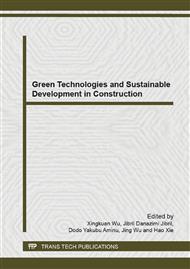p.23
p.27
p.34
p.38
p.44
p.48
p.52
p.57
p.61
Green Building Components Used in Universiti Teknologi Malaysia Design Studio
Abstract:
Buildings are accounted for around half of worldwide energy consumptions, significantly contributing to global warming and the alteration of natural ecosystems, as proved by recent reports. The role of higher education as a means of comprehensively introducing new generations of architects to the principles and practices of sustainable environmental design is becoming highly significant, although this faces a number of pedagogical and professional barriers. The aim of this study was to identify green building components used in the pedagogcal approach in environmental design studio and to present the state of sustainable education technological practice in Universiti Teknologi Malaysia (UTM). The method used was through observatory studies of environmental design studio for a whole semester to identify the pedagogies used in teaching the environmental design. Lecture inputs, experiment, site visit, field trip, crit, pin up crit and assessment were pedagogies used for the environmental studio were identified as the pedagogy used and the most observed components are active and passive while the activitiespost occupancy are seldom used.
Info:
Periodical:
Pages:
44-47
Citation:
Online since:
May 2014
Keywords:
Price:
Сopyright:
© 2014 Trans Tech Publications Ltd. All Rights Reserved
Share:
Citation:


